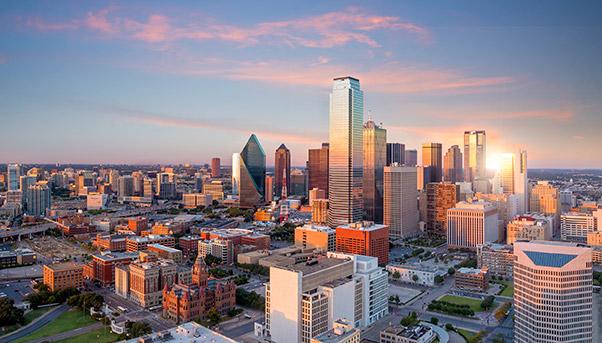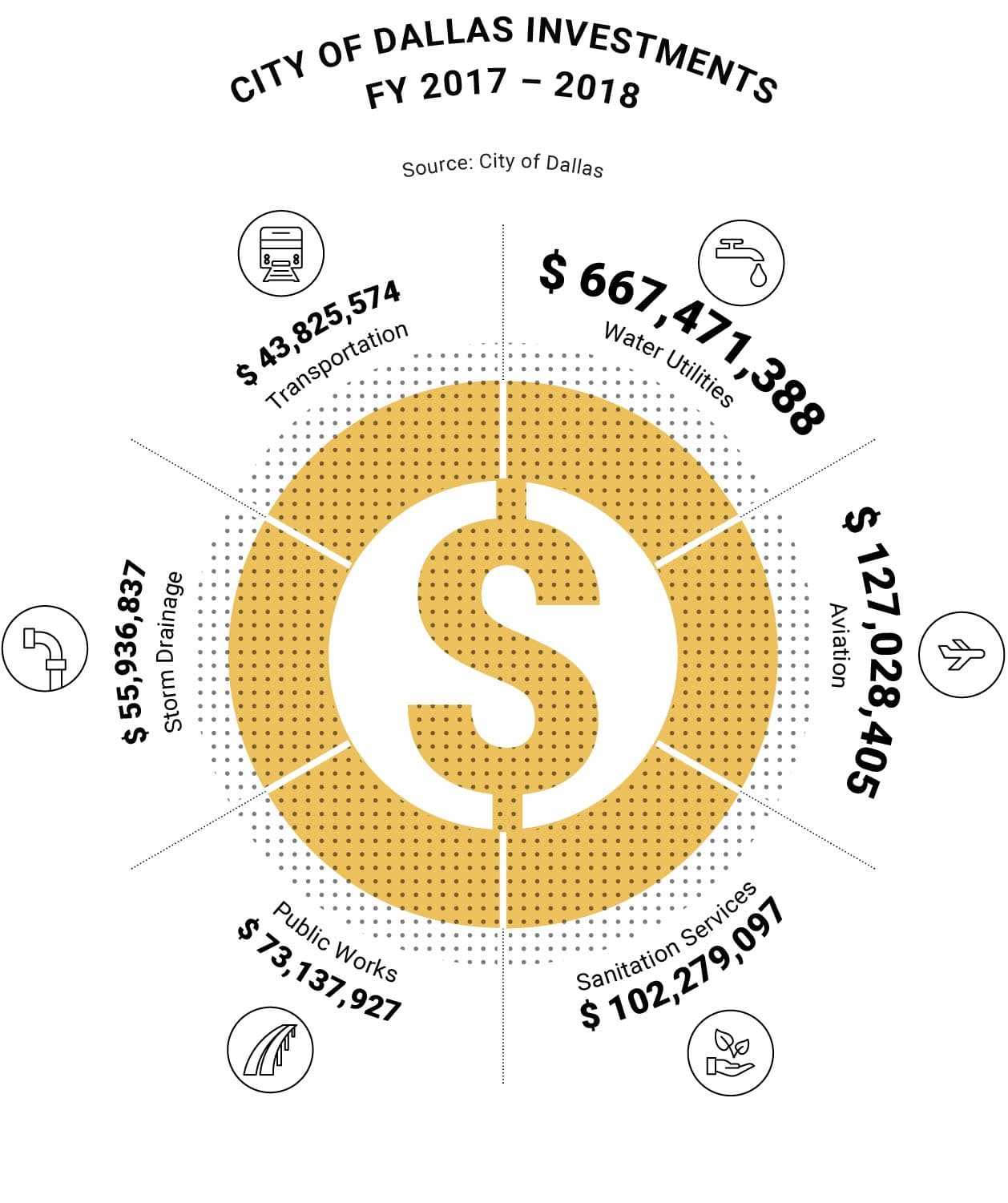
A growing city; one of the largest economic agglomerations in the U.S. Southwest; a transport hub hosting the fourth-busiest airport in the United States. Dallas is all this and more. This nerve center of the state Texas, which in turn is one of the economic powerhouses of the U.S., has been forced in recent years to face up to a fundamental challenge: how to close an infrastructure gap that is slowing its growth. In 2014 the city’s municipal government calculated it needed $9.6 billion to upgrade the city’s critical infrastructure, from streets to water pipelines. A wake-up call that prompted the City of Dallas to take a series of actions, some of them traditional like closer scrutiny of the investments awarded in the annual budget; and others that were more innovative. And the innovative solutions hold the key to the future of Dallas in terms of modernizing its infrastructure networks.
A bond issue to pay for infrastructure
A public consultation to renew the city. That’s the reason why the City of Dallas city council decided to ask residents to vote on November 7 to approve a $1.05 billion bond issue to finance an infrastructure plan. The answer was “yes”, and over half the funds will go to 1,027 projects to improve the city, like re-paving roads and streets, bridge maintenance, sidewalk resurfacing and new streetlights. The other half of the financing will go to improving the area’s rail transport. But the project’s most innovative strength came from public participation ahead of the vote at community level. The first step was to set up a Citizens Bond Task Force, authorized by the city government to canvas citizens for ideas on the best way to spend the money. Led by Michael Sorrell, president of Paul Quinn College, one of the city’s historic universities, the Task Force was divided into five commissions (streets, parks and trails, water management, critical services, and economic development and housing). The 32 meetings with thousands of citizens resulted in whittling down the wish list of nearly $10 billion in projects to a final list achievable for $1.05 billion. An innovative financing model that promises to give the Texas city an important push on its pathway to renovation.

The Dallas bullet train
It is not a public investment, but a private bet; it is not routine administration, but a special project; but above all it is the city’s most ambitious long term infrastructure project. The project of the future in Dallas is the “bullet train”, a rocket that travels at 200 miles per hour and connects Dallas to Houston in just 90 minutes.
The price tag is $12 billion, and not a dollar will come from the government. Or that’s the aim of Tim Keith, President of Texas Central Partners (the private company that will finance the work), who is convinced that the money can be raised by private investors willing to take on financial risk of a project that will change the future of transportation in the Lone Star State.
In particular, the plan calls for one third of financing to come from investment, and the remaining two thirds from debt.
The project is in the final stages. At the end of January, Texas Central Partners unveiled the plans for a futuristic terminal to be built in Dallas on a 60-acre vacant lot located next to the Kay Bailey Hutchinson Convention Center.
There is no start date yet for construction, but the project is in the final approval phases at the Federal Railroad Administration, and federal authorities have underlined its importance.
«Safe, accessible and efficient regional rail systems are an important component in the transportation networks of many areas», Transportation Secretary Elaine Chao said, referring to the Texas Bullet Train and others being developed. «As proposed, these rail projects would increase travel options and promote economic growth in their regions of the country».
Once completed, the railway will immediately become a strategic infrastructure for Texas commuters. Every day, 50,000 people go back and forth between Dallas and Houston, and without a modern infrastructure their lives are only destined to get worse. The Texas Department of Transportation calculates that by 2035 the journey time on Interstate 45 from Houston and North Texas will rise to 6.5 hours from the current 5.
The Texas infrastructure challenge
The bullet train project demonstrates just how big an impact Dallas infrastructure development can have on Texas as a whole. The state boasts a rich set of infrastructure assets: 53,000 bridges, 360 airports, 10,000 miles of freight rail track, and 313,000 miles of public streets and roads. These are record numbers for the United States, even if – as confirmed by the American Society of Civil Engineers (ASCE) – they are not enough by themselves to solve the state’s infrastructure needs. On a scale from A to F, the ASCE gives Texas a C-, indicating a good infrastructure system that is showing signs of decay and vulnerability. Looking at bridges alone, 50% of the total are more than 40 years old and 20% were built more than 60 years ago, confirming the need for immediate action across the state and in its largest cities.
Texas has already started to respond to its infrastructure needs. The state budget for 2018 ($158.25 billion) is the highest in the US, ahead of New York ($152.3 billion) and California ($123 billion). Moreover, transport spending is higher than for any other state ($30 billion compared to $18 billion for California and $15.9 for New York). These figures confirm just how strategic state spending is for US infrastructure, as underlined by the Trump Administration, which has promised the state of Texas $13.1 billion as part of its “priority list” of infrastructure projects.

